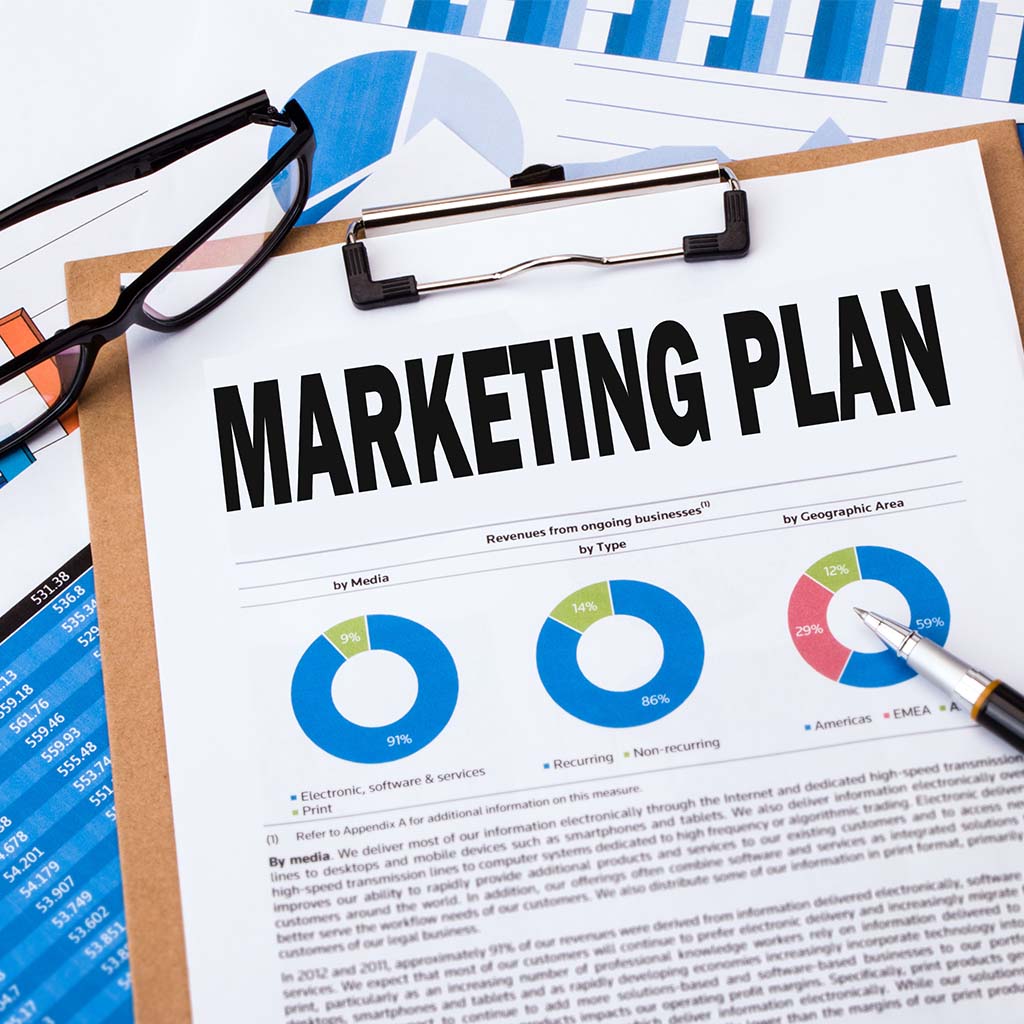How To Create A Marketing Plan
The key to a full pipeline of prospects and ultimately more customers is to make sure you have a solid marketing plan. We will learn exactly how to create a marketing plan. By the time you’re done reading this article and apply the 9 step process, you’ll know exactly what to work on every week to succeed. At the end just one quarter, you’ll have more marketing momentum than most of your competitors.
Here’s how to dominate your market and put yourself ahead of the competition.

What Is A Marketing Plan?
A marketing plan is a road map for you to follow. The plan shows you how to navigate from where you are to where you want to be. Marketing plans can range in complexity from one page canvases to hundreds of pages long. It may be a stand-alone document within your organization, or it could be part of a larger overall business plan.
For businesses seeking funding from venture capitalists, banks, or grants, you will need a full business plan. That business plan will need sections dedicated to marketing, finances, operations, and more.
However, if your business is self funded, or you are still testing the viability of a business idea or new product line, I suggest starting with a business model canvas. The work you put into a canvas can be transferred into a larger business plan if needed. The time you invest in completing a business model canvas isn’t wasted.
Let’s get started and learn how to create a marketing plan.
Focus On Your Business Growth
We create valueable content that will help your business grow.
9 Steps To Follow When Creating A Marketing Plan
Step 1: Start with a SWOT analysis
Step 2: Complete (or update) a business model canvas
Step 3: Test your assumptions
- Will your ideal customer pay for the product or service you’re bringing to market?
- Are they already accustomed to paying for your service through a different method than the one you’re proposing (cash vs credit for example)
- Do you know where to reach your ideal clients?
- Can you generate more revenue than the costs you’ll encur?
- Can you build the product or service you want to deliver?
Step 4: Define SMART goals for the next quarter
Step 5: Set up a tracking system
Step 6: Execute your weekly plans, documenting your activities and results
It’s important to track your progress. By spending just a minute at the beginning of each day reviewing what you plan to accomplish will take you far. Add to the weekly totals at the end of each day. Your competitors are not focusing on their goals twice a day. And you’re not wasting much time on this activity, very simple to execute. The key is having a scoresheet readily available. This can be a printed sheet pinned to your wall or an electronic spreadsheet and it’s link embedded in a daily calendar entry. Either way you’ll see the goal tracker daily.
Step 7: Adjust mid-course as needed
Step 8: Evaluate the end-of-quarter results
- What percentage of activities I wanted to accomplish actually get done? Why or why not?
- What did I learn about my potential customers during this quarter?
- Did I identify any gaps in my marketing, internal operations, or customer fulfillment workflows that need corrected?
- Did I have all the resources I needed going into this quarter? What resources do I need to add?
- Did I generate more business revenue this quarter than business expenses?
- Before I begin the next quarter of marketing, are there any adjustments I need to make to this plan?
Step 9: Repeat the process
Keep your marketing engine running.
- Re-assess your SWOT analysis and business model canvas
- Are there more assumptions to test? More customer surveys to conduct?
- Revise / Update your SMART goals for the quarter
- Create a new tracking score sheet for this second quarter and follow it
- Reflect, evaluate, and repeat
There you have it, the early stages of a long-term strategic plan with the SWOT analysis and the business model canvas. This process of creating and executing a marketing plan will educate potential customers about you, your products, and your services. Repeating the process quarterly will propel your business throughout the year.
Marketing is only part of the equation. You must also meet with potential clients, assess their needs by asking a lot of questions, and ultimately help them make a decision to purchase from you. Continue to seek information about sales, operations, finances, manufacturing, customer service, legal and regulatory, etc.
Please leave comments below to help me and others learn from your experience. Did you find this strategy effective as you created your marketing plan? What this an easy formula to follow? Did you get the results you initially set out to achieve?
Related Articles
- [link to related article 1]
- [link to related article 2]
- [link to related article 3]
Claim Your Free [lead magnet] Now
Offer a worksheet, checklist, planning calendar, or other valuable content here.
The button should take the reader to a landing page (open in new window) Simply gather first name and email address to give the user access to the content. Also be sure the opt-in form emails a link to the reader as a follow-up.